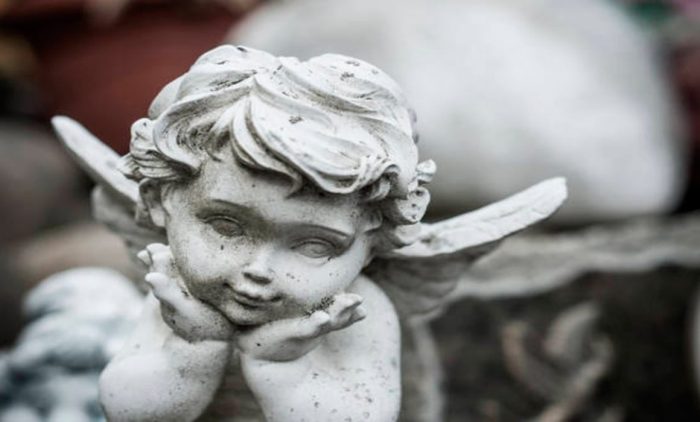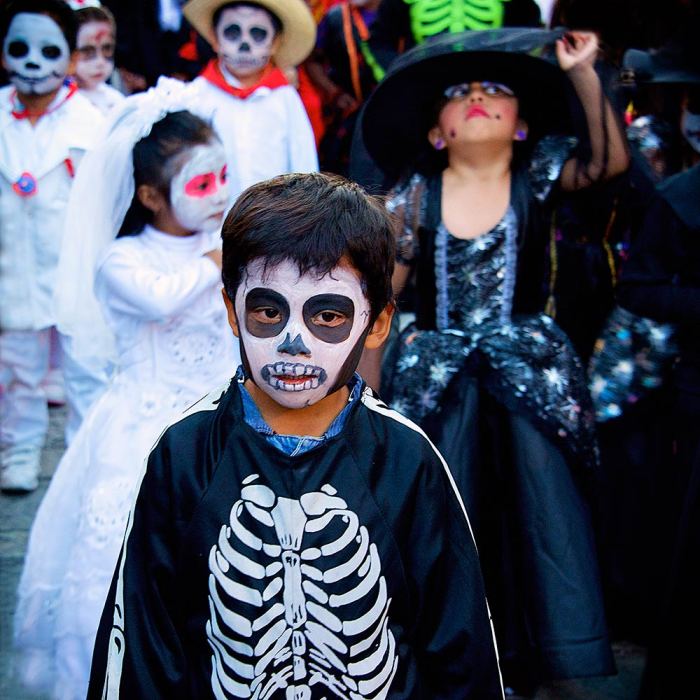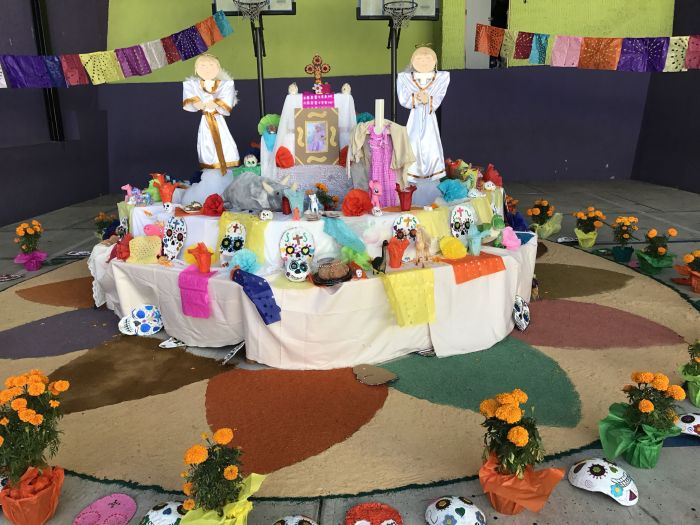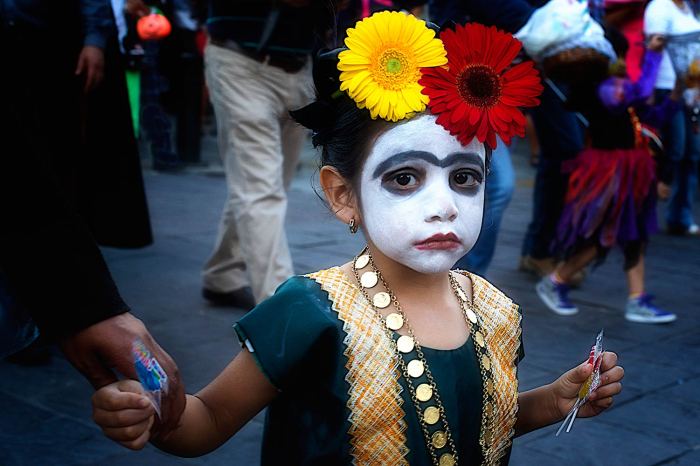As Angelitos Dia de los Muertos takes center stage, this opening passage beckons readers into a world crafted with vivid imagery and historical context, ensuring a reading experience that is both absorbing and distinctly original.
Angelitos Dia de los Muertos, a cherished celebration deeply rooted in Mexican culture, holds a profound significance in honoring deceased children. This festival, adorned with vibrant colors, symbolic decorations, and heartfelt traditions, serves as a poignant testament to the enduring bond between the living and the departed.
Cultural Significance of Angelitos Dia de los Muertos

Angelitos Dia de los Muertos, a poignant celebration within the larger Dia de los Muertos (Day of the Dead) festivities, holds deep cultural and historical significance. Its origins can be traced back to pre-Columbian times, where the indigenous peoples of Mexico believed that the spirits of deceased children returned to the living world during this special day.
As the celebration evolved over time, the Catholic Church’s influence introduced the concept of angels, leading to the fusion of indigenous beliefs and Christian symbolism. Children, representing purity and innocence, became associated with angels, and their souls were believed to reside in heaven.
Role of Children as Angels
Children play a central role in Angelitos Dia de los Muertos. They are honored as “angelitos,” or little angels, and are believed to be messengers between the living and the departed. Their presence is celebrated with special altars, offerings, and prayers.
Traditional Customs and Practices, Angelitos dia de los muertos
Angelitos Dia de los Muertos is marked by a range of traditional customs and practices, including:
- Angelito Altars:Families create special altars adorned with white decorations, candles, flowers, and toys to honor their deceased children.
- Offerings:Food, drinks, and other items that the child enjoyed in life are placed on the altar as offerings.
- Prayers and Songs:Families gather around the altar to pray and sing traditional songs to honor and remember their loved ones.
- Cemetery Visits:Families visit the graves of their deceased children, bringing offerings and flowers to decorate the site.
Symbolism and Imagery

Angelitos Dia de los Muertos is adorned with specific colors, symbols, and decorations that hold deep cultural significance. These elements collectively create a sacred space to honor and remember deceased children.
White and Gold Colors
White, a color often associated with purity and innocence, is the predominant hue of Angelitos Dia de los Muertos. It represents the childlike nature of the deceased and their association with the divine. Gold, a symbol of wealth and prosperity, is also used to adorn altars and decorations, expressing the belief that deceased children have a special place in the afterlife.
Flowers, Candles, and Decorations
Flowers, candles, and other decorations play a significant role in honoring deceased children. Fresh flowers, such as white chrysanthemums and marigolds, symbolize the beauty and fragility of life. Candles represent light and hope, guiding the spirits of deceased children back to their families during the celebration.
Angels
Angels are central figures in Angelitos Dia de los Muertos. They symbolize purity, innocence, and the divine protection of deceased children. Statues and images of angels are often placed on altars and decorations, representing the belief that children are under the care and guidance of celestial beings.
Angelitos Dia de los Muertos, a day to remember and honor the departed little ones, is a beautiful and poignant tradition. If you’re looking for a free resource to enhance your understanding of sustainability, I highly recommend the free LEED AP practice test . Returning to the topic of angelitos, their memory is kept alive through elaborate altars adorned with toys, sweets, and other items they loved.
This heartfelt celebration is a testament to the enduring bond between families and their cherished ones.
Artistic Expressions: Angelitos Dia De Los Muertos

Angelitos Dia de los Muertos is not just a day of remembrance but also a vibrant celebration of life and art. Various art forms capture the essence of this holiday, preserving and transmitting its cultural heritage.
Paintings
Paintings depicting Angelitos Dia de los Muertos often feature vibrant colors, whimsical imagery, and scenes of families honoring their deceased loved ones. Famous works include:
- “Angelitos de la Muerte” by Diego Rivera: A colorful and lively portrayal of children dressed as angels, playing and celebrating.
- “Dia de los Muertos” by Frida Kahlo: A surrealist depiction of the holiday, with skeletons adorned with flowers and traditional clothing.
Sculptures
Sculptures of angelitos, often made of wood or ceramic, are common decorations during Angelitos Dia de los Muertos. These figurines represent the spirits of deceased children and are believed to protect the living.
Music
Music plays an integral role in Angelitos Dia de los Muertos celebrations. Traditional songs, such as “La Llorona” and “Cielito Lindo,” evoke the spirit of the holiday and honor the memory of the departed.
Modern Interpretations and Adaptations

Angelitos Dia de los Muertos has undergone significant evolution over time, reflecting changing cultural norms and global influences. Today, it is celebrated with a blend of traditional and contemporary practices.
Globalization has fostered cross-cultural exchange, leading to the adoption of new elements into Angelitos Dia de los Muertos. For instance, the use of modern materials like plastic and neon colors in altar decorations has become commonplace. Additionally, the holiday has gained popularity outside of Mexico, with communities worldwide embracing its unique traditions.
Contemporary Interpretations
Contemporary interpretations of Angelitos Dia de los Muertos emphasize the celebration of life and the connection between the living and the departed. Artists and cultural practitioners explore new ways to honor the memory of deceased children through creative expressions, such as:
- Interactive altars:These altars invite participants to engage with the spirits of deceased children through interactive elements like games, puzzles, and toys.
- Community murals:Depicting scenes of joy and remembrance, these murals serve as public spaces for honoring and remembering young souls.
- Digital offerings:Online platforms and social media have become spaces for creating virtual altars and sharing memories of departed children.
FAQ Resource
What is the significance of Angelitos Dia de los Muertos?
Angelitos Dia de los Muertos is a celebration that honors deceased children, recognizing their innocence and purity.
What are some traditional customs associated with Angelitos Dia de los Muertos?
Traditional customs include creating altars adorned with white and gold decorations, offering toys and treats to the departed children, and lighting candles to guide their spirits.
How is Angelitos Dia de los Muertos depicted in art?
Angelitos Dia de los Muertos is depicted in various art forms, including paintings, sculptures, and music, often featuring angelic figures and symbols of childhood.
